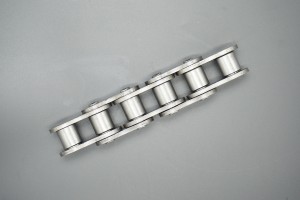In mechanical transmission, roller chains are often used to transmit power for high loads, high speeds or long distances. The number of rows of a roller chain refers to the number of rollers in the chain. The more rows, the longer the chain length, which usually means higher transmission capacity and better transmission accuracy. Therefore, generally speaking, the more rows of roller chains, the better.
Specifically, the more rows of roller chains, the better the bearing capacity, transmission efficiency, transmission accuracy and service life, etc.:
Carrying capacity: The more rows there are, the longer the chain length will be, and the strength and carrying capacity of the chain will increase accordingly.
Transmission efficiency: The transmission efficiency of the roller chain is related to factors such as chain length, friction loss and the number of rollers. The more rows, the more rollers. Under the same transmission conditions, the transmission efficiency of the roller chain will be higher.
Transmission accuracy: The more rows, the more rollers in the chain, the smaller the swing and deviation of the chain during the transmission process, thus improving the transmission accuracy.
Life: The more rows, the load capacity and life of each roller in the chain will decrease accordingly, but in general, the more rows, the greater the load capacity and longer life of the chain.
It should be noted that the number of rows of the roller chain is not as good as possible. Too many rows will increase the weight and friction loss of the chain, and will also increase the manufacturing cost and maintenance difficulty. Therefore, when selecting a roller chain, it is necessary to comprehensively consider factors such as service conditions, transmission requirements, cost and maintenance, and select the most suitable number of rows.
Post time: Aug-25-2023

